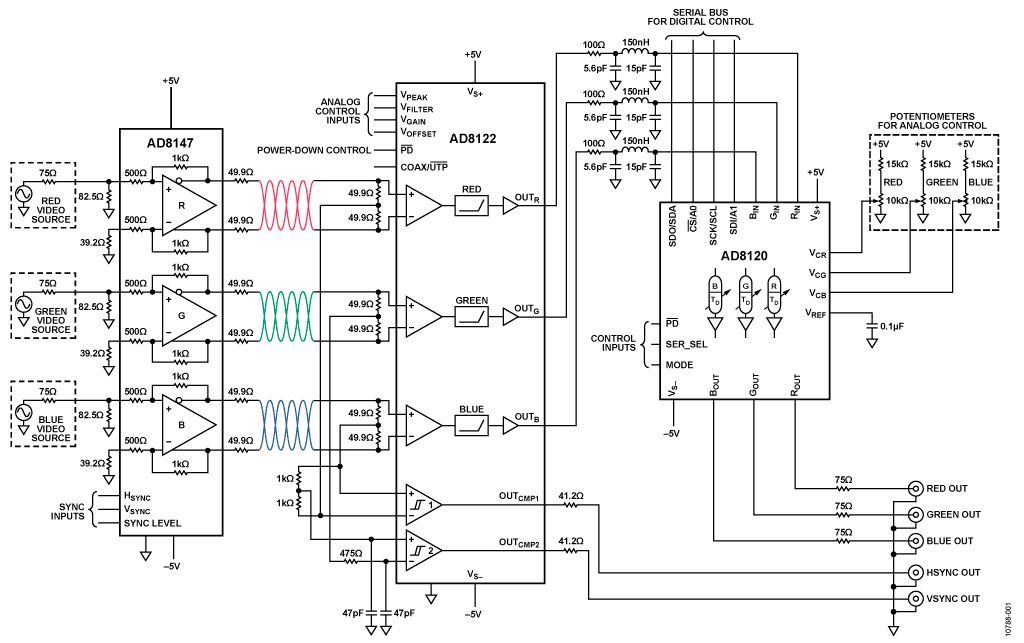
CIRCUIT FUNCTION AND BENEFITS
Originally intended to carry local area network (LAN) traffic, unshielded twisted pair (UTP) cable, such as Category-5e (Cat-5e), has become an economical solution in many other signal transmission applications because of its respectable performance and low cost. Among these applications are systems that transport broadband video signals in which three of the four twisted pairs in the cable carry the red, green, and blue (RGB) computer video signals or the luminance and two color difference (YPbPr), high definition component video signals. The required horizontal and vertical synchronization pulses can be embedded in the video signal blanking intervals, or these pulses can be carried as common-mode difference signals among the three pairs. These systems often include video crosspoint switches and are used to distribute video signals from a small number of sources to many displays, as in digital signage applications, or from a large number of sources to a small number of displays, as in keyboard-video-mouse (KVM) networks.
Signals transported over UTP cable suffer from three major impairments that degrade video quality
• Nonlinear bandlimiting due to the skin effect, resulting in signal dispersion and loss of high frequency signal content.
This impairment results in loss of image sharpness and dark streaking.
• Low frequency flat loss due to resistive loss that reduces image contrast.
• Delay skew between the four twisted pairs that stems from the unequal twist rates (lay lengths) which are used to minimize
crosstalk between the pairs. Delay skew produces color errors in the received image due to the misalignment in time of the three received signals.
The solution shown in Figure 1 overcomes these impairments by using the AD8122 triple receiver/ equalizer to restore the high frequency content of the video signals while also providing flat gain. The AD8120 triple skew compensating, analog delay line adds delay to the two earliest arriving signals such that the three received signals are properly aligned in time. The AD8147 triple driver provides the required single-ended-to-differential conversion of the source video signals.
Download Full Block Diagram Below
Advertisement

Learn more about Analog Devices





